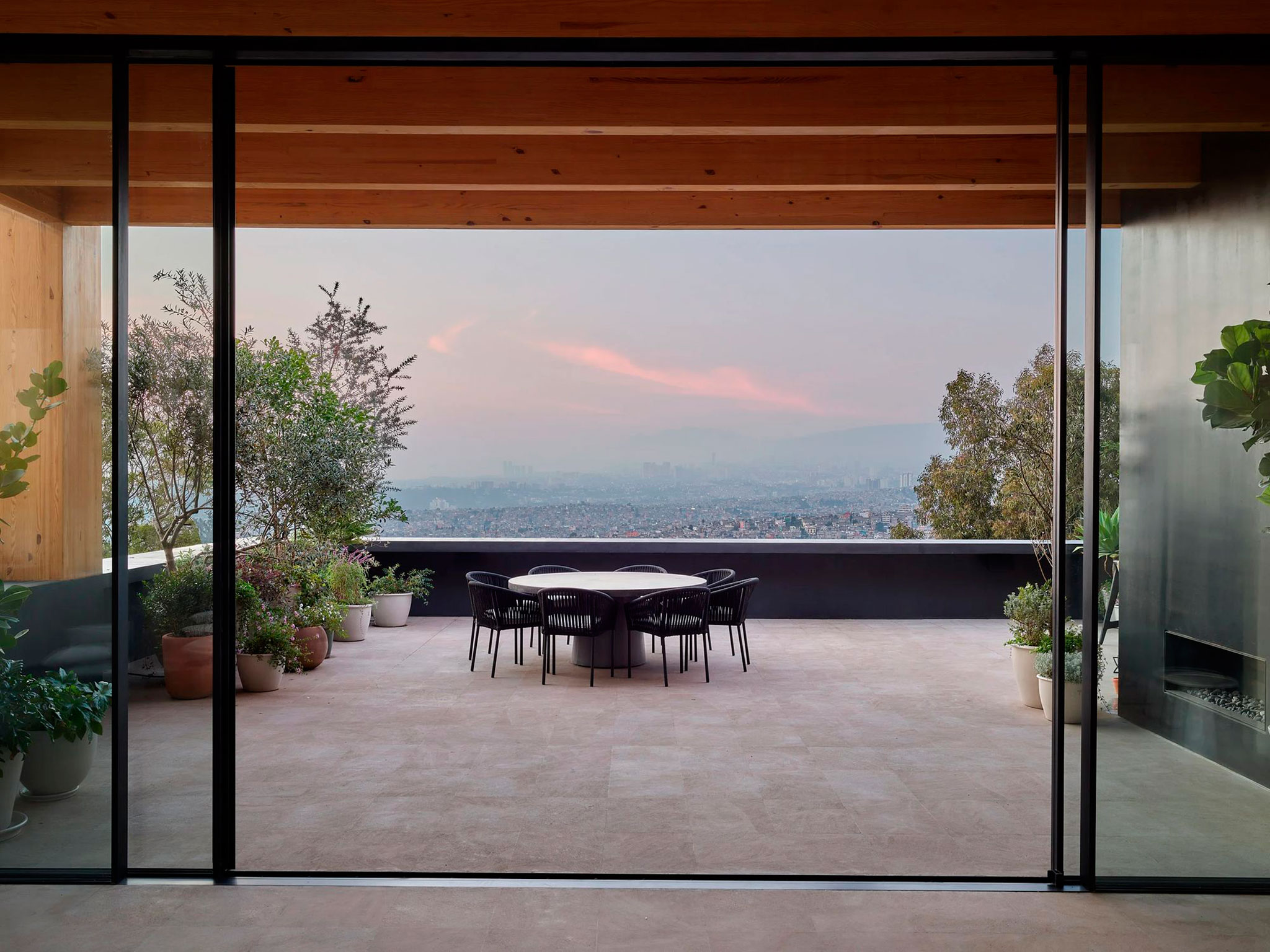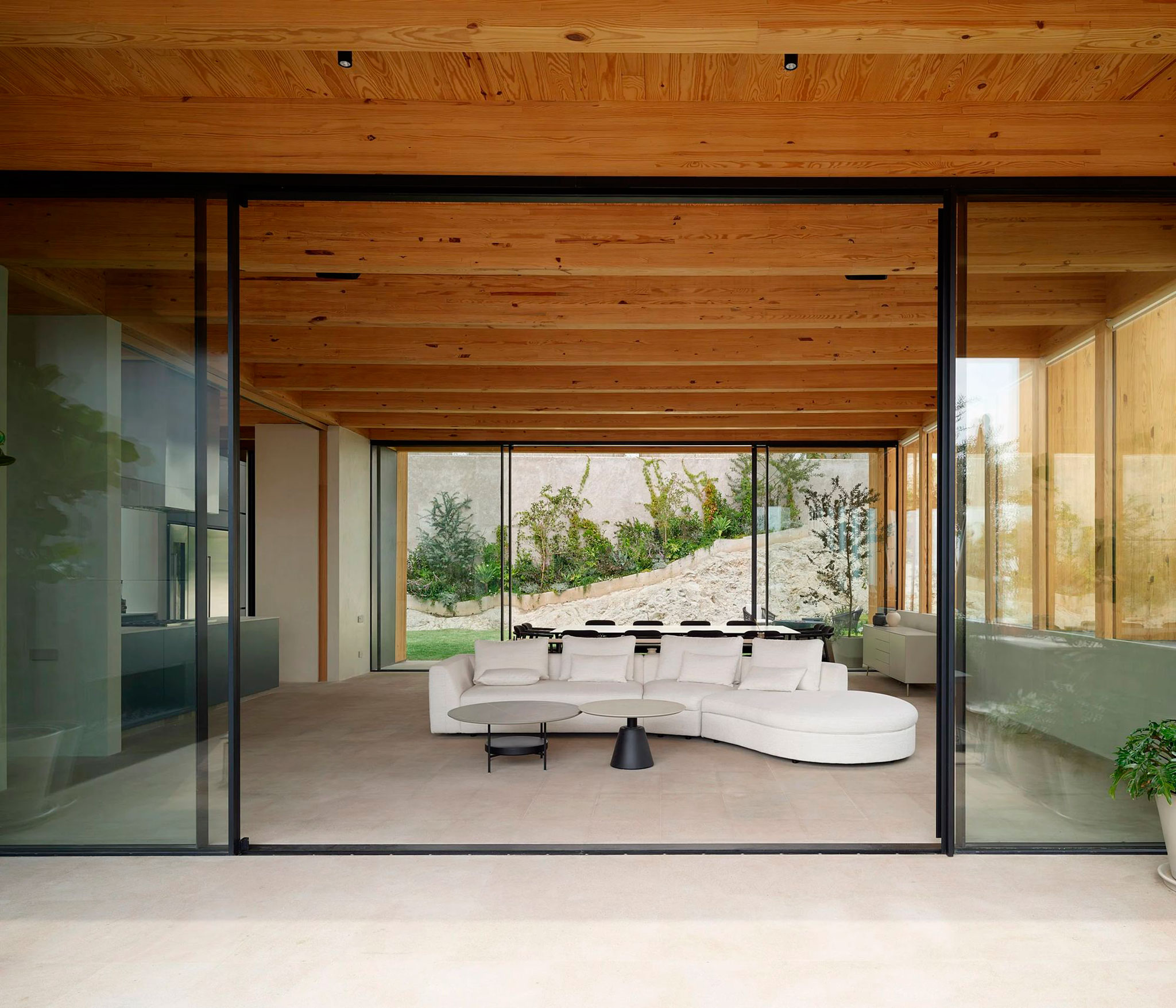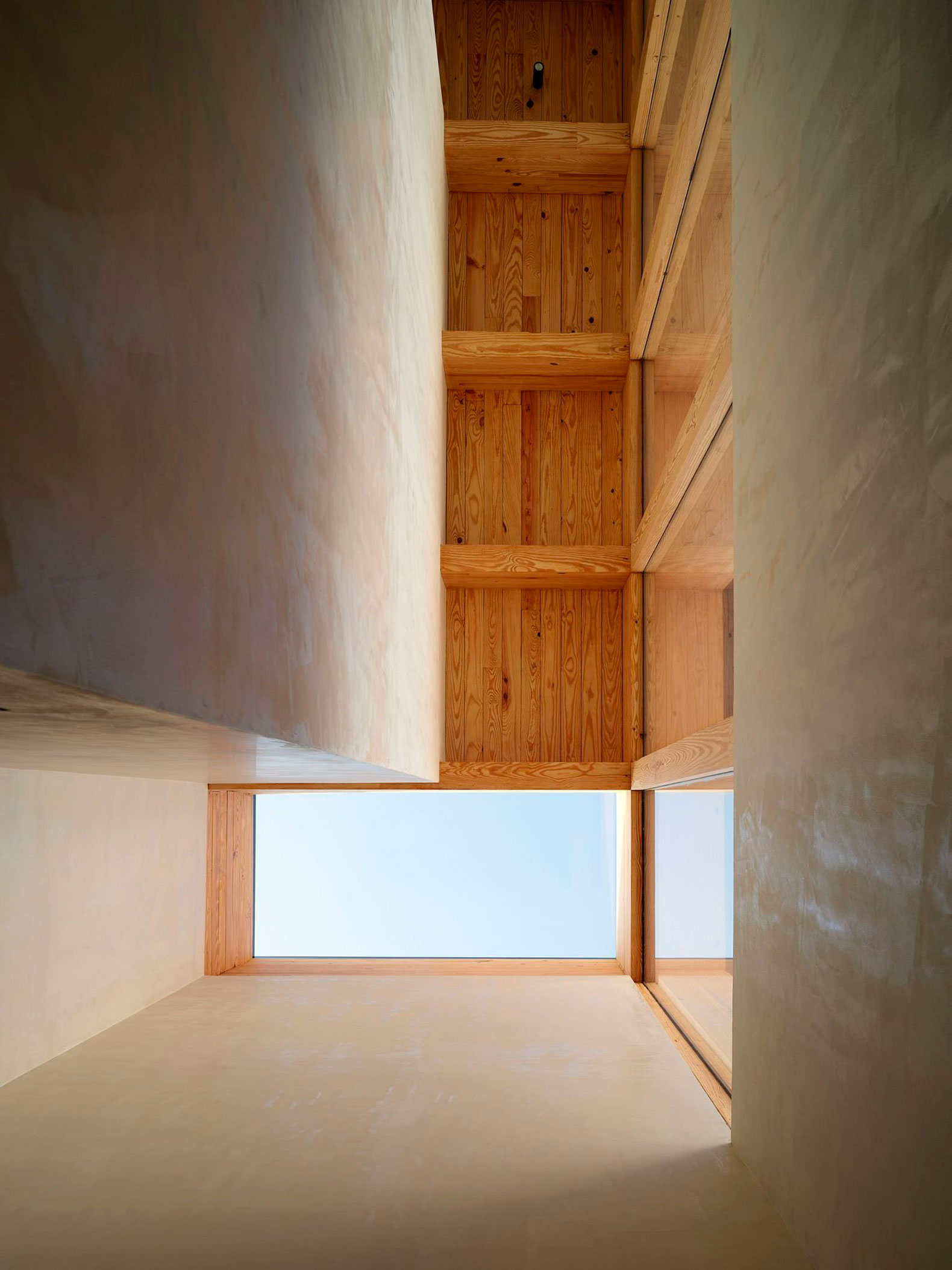The minimalist architecture of clean lines and soft tones dominates the entire design. From the ground floor, an interior journey is generated that begins with a skylight over the staircase illuminating the circulation space, guiding visitors to the fully glazed upper space that opens to the city through Long urban views highlighted in the blue sky.
The structure is timber, and the ground floor and first floor are constructed from concrete block walls. PPAA has completed many homes in Mexico, including Pachuca House, Tlalpuente House and Octavia House.

Echegaray house by PPAA. Photograph by Fernando Marroquin.

Echegaray house by PPAA. Photograph by Fernando Marroquin.
Project description by PPAA
Echegaray is a minimal home located in Mexico designed by Pérez Palacios Arquitectos Asociados. The newly-designed house stands out from the typical construction patterns of the surrounding area, where it is customary to position public areas on the ground floor and private quarters upstairs. However, the architects of this particular project, after conducting thorough research on the topography and context of the land, have decided to challenge this traditional arrangement.
By inverting the program, the private spaces are located on the ground floor, providing an increased level of privacy for the residents, while the public areas are elevated to the upper level, serving as a lookout point with a stunning panoramic view of the city.
The residence is not simply a building, but rather a mountain to be climbed, with each level offering a unique experience. The transition from the private spaces to the common areas is a carefully-crafted journey, taking the occupant from the darkness to the light, and from privacy to a communal space.

Echegaray house by PPAA. Photograph by Fernando Marroquin.
The design is a testament to the architects’ expertise in creating seamless transitions between different atmospheres within the same space. Aside from the aesthetic value of this unconventional arrangement, the innovative design also has practical benefits. By positioning the building in this way, the architects were able to minimize excavation on the site, while integrating the natural terrain into the living quarters and taking advantage of the natural landscape. This approach not only makes the construction process more efficient but also contributes to ecological sustainability by reducing CO2 emissions.
In summary, this residential project defies traditional construction paradigms and instead leverages a deeper understanding of topography and context to create a unique, panoramic living space that is both visually stunning and ecologically responsible.














































